We publish and sell sheet music. Check our catalogue (under Sheet Music) for info!
To order, please send an email to;

Our latest editions |
The Swedish Art Music Society (Musikaliska konstföreningen) is a non-profit organisation with the aim of publishing Swedish art music. It was founded in 1859. Each year, one or two musical compositions are selected for publication. Often contemporary music is chosen, but sometimes we publish older masterpieces which have re-mained unpublished. |
Harald Fryklöf (1882-1919)
Sonata for piano
Harald Fryklöf (1882-1919) was a Swedish composer whose life ended far too early as a result of the dreaded Spanish Flu, which was rampant at the close of the First World War. He studied to be a pianist, organist, and composer at the conservatory in Stockholm. Thereafter he continued to study priately in Stockholm and Berlin.
Fryklöf was a very proficient pianist and although the sonata in E minor is his best piece for piano, it has never been previously published. The autograph is not dated, but it seems likely that Fryklöf wrote the work in the years before his death. The sonata does not seem to have been performed during Fryklöf’s lifetime.
.
|
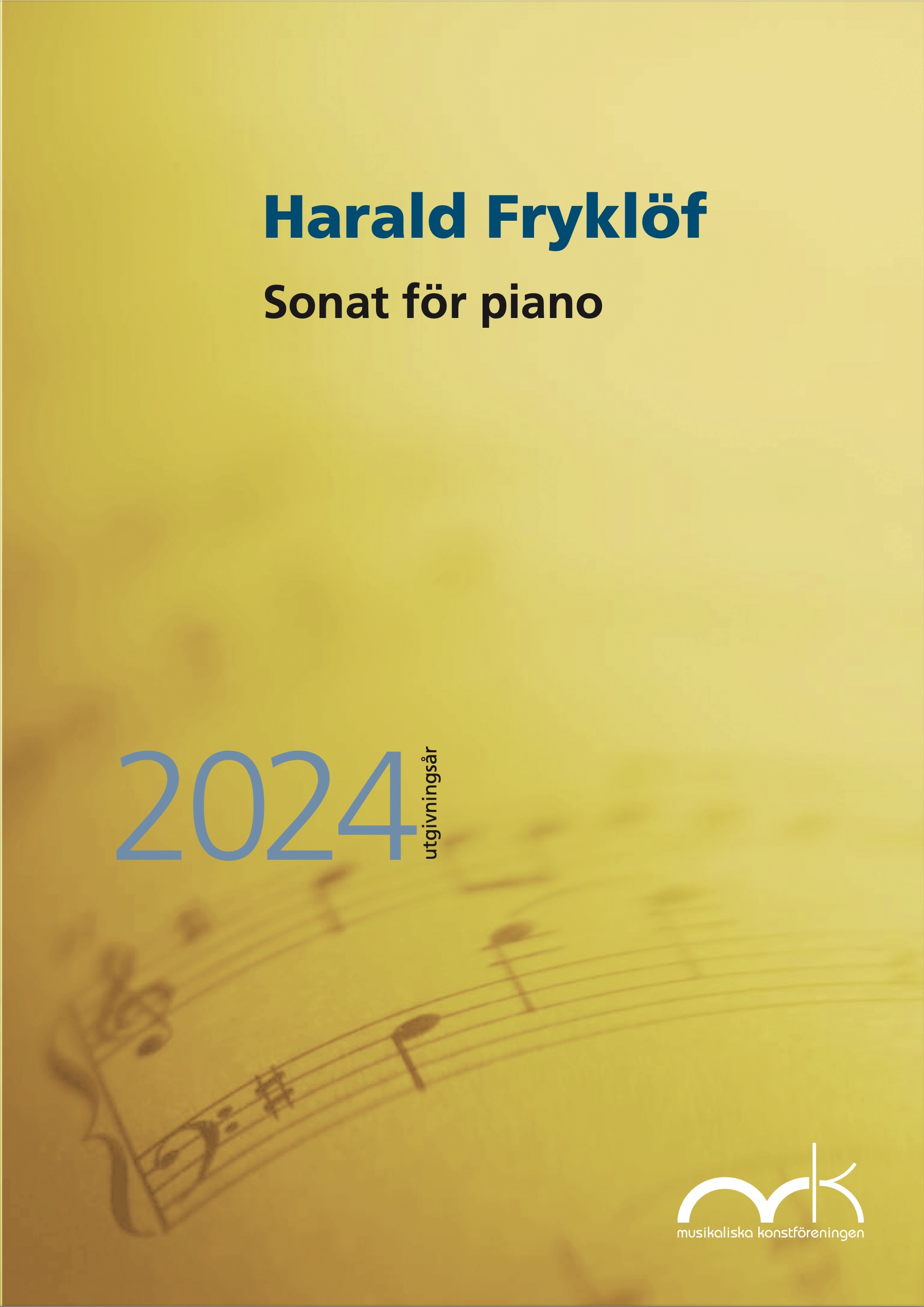
|
Michael Waldenby (1953- )
Dödens Engel (Angel of Death), Oratorio for soprano, mixed choir, and orchestra, Op. 66
Dödens Engel (Angel of Death) was the last and grandest poem written by Johan Olof Wallin (1779–1839), remembered today mainly for his hymns that are still sung in the Swedish Lutheran Church. Angel of Death, first published in 1840, deals with the transitory nature of life and the seriousness of eternity, themes that he always varied with unquenchable inspiration. The oratorio was commissioned by the diocese of Stockholms; the premiere took place on 16 October 2022 in Stockholm Cathedral.
|

|
Gunnar de Frumerie (1908-1987)
Två sonater för piano, op. 64 & 65
As a composer, de Frumerie is perhaps best known for his songs, not least his settings of poems by Pär Lagerkvist, but he also composed amongst other things a great number of works for his own instrument, the piano: a renowned Chaconne from the early 1930s, suites and sonatinas as well as these two piano sonatas. Relatively short works, they were both composed in 1968, although the first sonata is based in part on material from the 1930s. This edition has been made possible through the support of the de Frumerie Foundation.
|
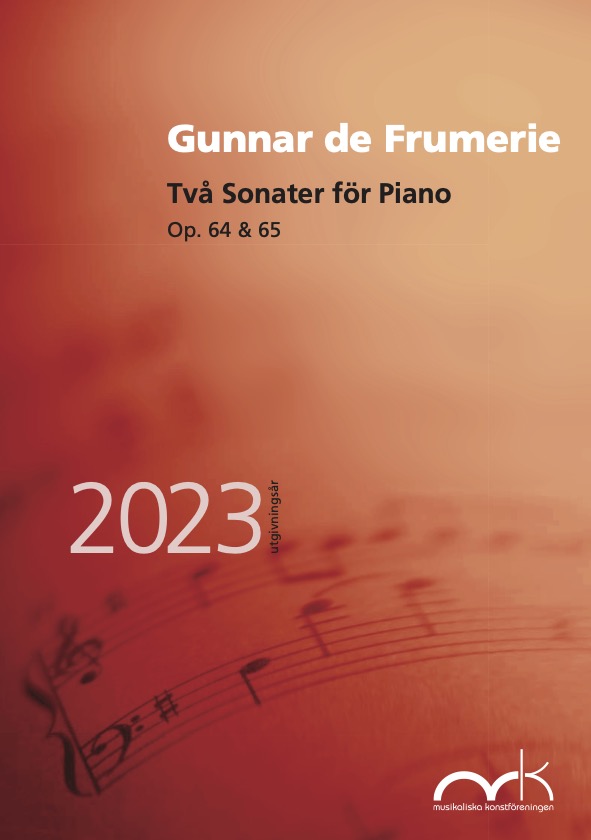
|
Elfrida Andrée (1841-1929)
Symfoni nr 2 a-moll
"Although Elfrida Andrée can almost be regard¬ed as an autodidact when it comes to orchestral music, her symphony shows an astonishing sensitivity to an orchestra’s possibilities. She embraced the tradition from Mendelssohn, Niels W. Gade, and Carl Maria von Weber by which each instrument with its individual timbre represents a particular mood. This can be heard not only in her treatment of the string section, with long cantilenas in the cellos and vibrating middle voices for the violin parts, but also in her treatment of the winds, in which the woodwind parts in particular are sensitively written in the style of German Romanticism, with unison passages and beautiful melodies in the parts for flute, oboe, and clarinet. She must have been keen to study scores and to attend those orchestral concerts that were given. But her sense of tone colour was most likely developed at the large Romantic organ in Gothenburg’s cathedral."
Eva Öhrström
|
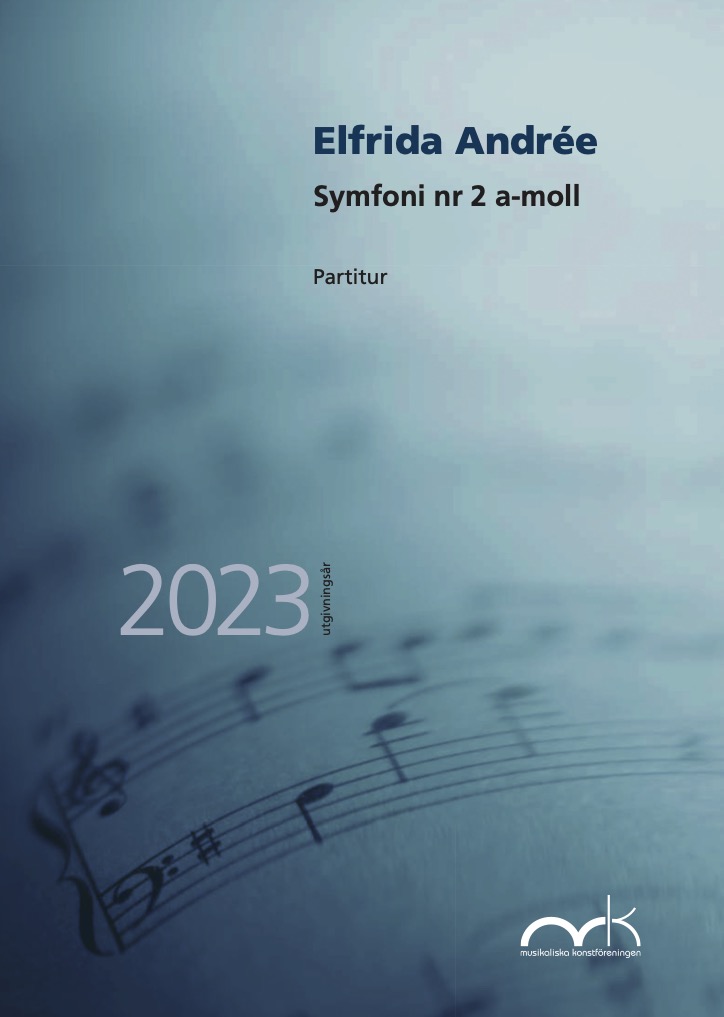
|
Lars-Erik Larsson (1908–1986)
Andante sostenuto för stråkorkester, op. 32:1.
For the programme “We were born in evil times – about children in a world of war”, which was broadcast on 12 November 1944, Lars-Erik Larsson wrote a short little piece for strings with the tempo designation “Andante sostenuto”. It was not given an actual title. The score was finished on 7 November. Two days later it was recorded at the Concert Hall in Stockholm, and the recording was broadcast with the radio programme on 12 November. The composer himself conducted the Radio’s Chamber Orchestra, an ensemble made up of musicians from what is now the Stockholm Philharmonic Orchestra
Andante serioso för liten orkester, op. 32:2.
Later in November 1944, Larsson composed yet another short orchestral piece, but for a somewhat larger ensemble including winds – an “Andante serioso” for small orchestra. The score is dated 30 November 1944. The composition was performed at a live radio concert “At the threshold of a new year” on 30 December by the Radio’s Chamber Orchestra under the direction of Ivar Hellman. On that occasion the work was presented simply as “Prelude”. In the catalogue of his works Larsson has put these two compositions together under the title “Two orchestral pieces” with the opus number 30.
Neither of these works ever received a second performance. They lay forgotten in the archives of the music library at the Swedish Radio until now, when, with the present edition, they have been made available to the public for the first time.
|

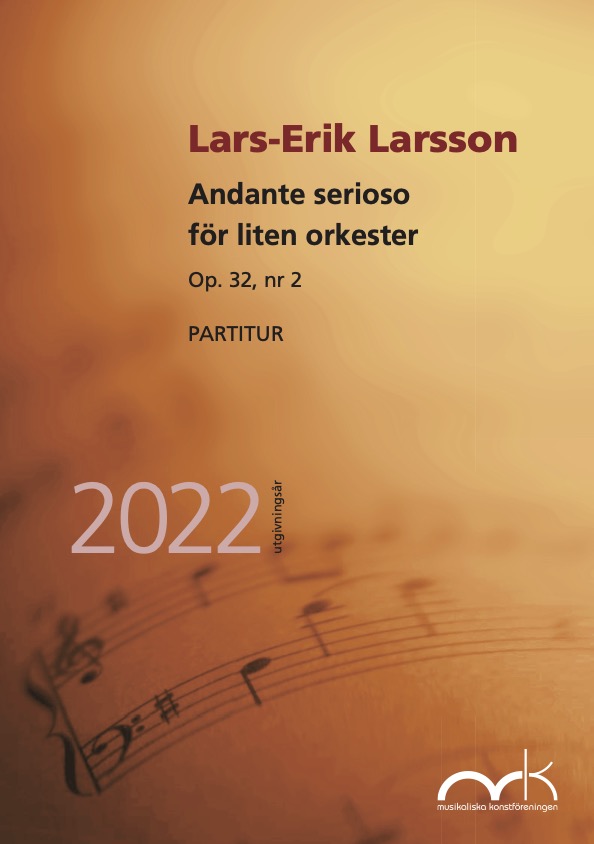
|
Bo Linde (1933–1970)
Trio for violin, cello and piano, op. 5.
Born in Gävle, Bo Linde was as a child something of a musical prodigy, who even began to compose at a young age. The present piano trio opus 5 is proof of the young composer’s talent. He was just 24 years old when he composed it, with a dedication to his older composer colleague Kurt Atterberg “in admiration and with thankfulness”. The trio received its first performance in 1954 at Fylkingen in Stockholm with the composer himself at the piano, a performance that was also broadcast on the radio.
The music critic Alf Thoor wrote of the work before its premiere:
“… Sometimes he has been accused of lacking seriousness, and when his composition teacher Lars-Erik Larsson made a comment to that effect, Bo Linde wrote the piano trio that is now going to be played. He does not want to say anything about it, for he maintains, as do all those in ‘the youngest generation’, that what the listener cannot detect without the aid of intellectual comments is not worth much anyway.”
|
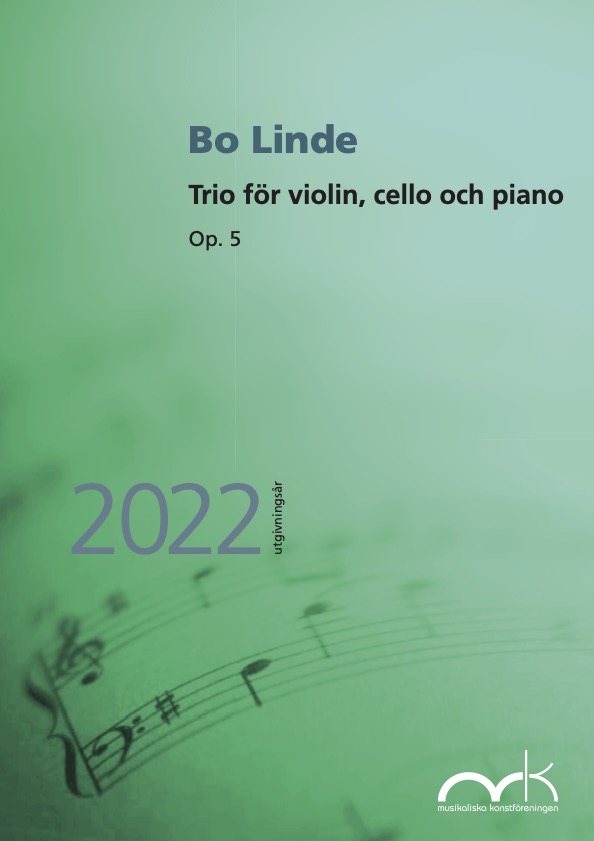
|
Hugo Alfvén (1872-1960)
Revelation Cantata, op. 31.
The Revelation Cantata was composed for the inauguration in 1913 of The Church of the Revelation in Saltsjöbaden, a suburb of Stockholm, as a result of a commission from Alfvén’s good friend, Nathan Söderblom, who was soon to become archbishop. It was Söderblom who turned to Alfvén, well known at the time not only for two symphonies but also for his large-scale religious choral works The Lord’s Prayer and At the Turn of the Century. For the text of the cantata Söderblom selected appropriate excerpts from the Bible, which Alfvén sat to music for double choir, two soloists, organ, harmonium, harp, celesta, and string quartet. Here Alfvén was obliged to refrain from using the large orchestral palette he usually excelled at since a large orchestra could not be accommodated in the relatively small church. The two choirs represent “earthly” and “heavenly voices” respectively.
Musikaliska konstföreningen has had a piano-score of the work in its catalogue since 1916. To accompany this and to mark the 150th anniversary of Alfvén's birth, we now offer a new edition of the full score and instrumental parts.
|
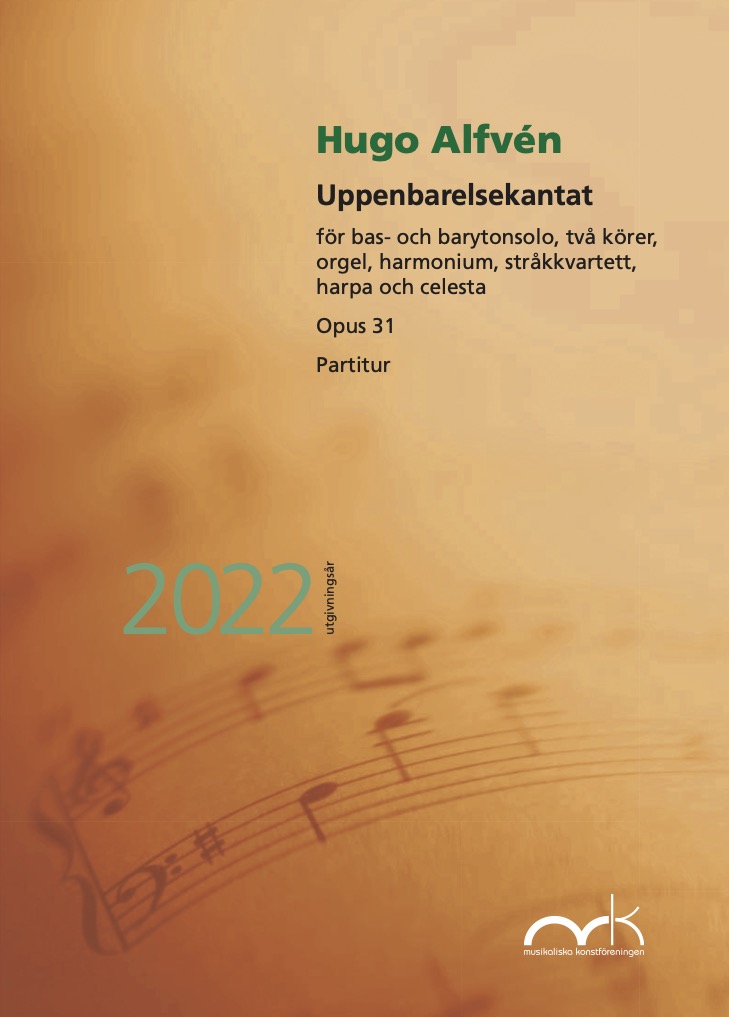
|
Hilding Rosenberg (1892-1985)
Divertimento for violin, viola, and violoncello, op. 67.
After having been absent from our catalogue for a number of years, Hilding Rosenberg's Divertimento for string trio returns in a brand new edition complete with both score and parts. Since the musicians play almost constantly, the layout of the parts is designed so that no page-turns occur within a movement.
Derived from incidental music Rosenberg wrote for the Swedish premiere of "The Great God Brown" by Eugene O'Neill in 1936, the Divertimento was first performed on the radio two years later. The first edition of the score was published in 1982.
|
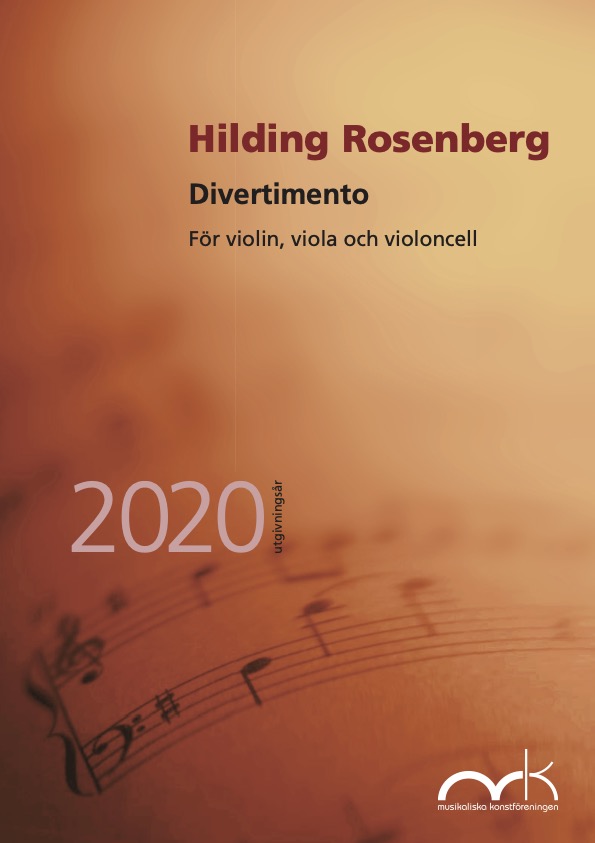
|
Harald Fryklöf (1882-1919)
Konsert-Ouverture, op. 1.
Harald Fryklöf (1882-1919) was a Swedish composer whose life ended far too early as a result of the dreaded Spanish Flu, which was rampant at the close of the First World War. He studied to be a pianist, organist, and composer at the conservatory in Stockholm. Thereafter he continued to study priately in Stockholm and Berlin.
Fryklöf’s debut as a composer occurred on 13 March 1908 when his opus 1, “Concert Overture”, was performed by the orchestra of the Concert Society in Stockholm under the baton of Tor Aulin. In the autumn of the same year, on 25 November, it was also played in Gothenburg by the Symphony Orchestra there. The conductor on that occasion was the principal conductor of the orchestra at the time, Wilhelm Stenhammar. After that, the work was completely forgotten.
In connection with the 100th anniversary of Fryklöf’s death, Musikaliska konstföreningen has decided to bring Fryklöf’s premier work back to life by publishing both the score and orchestral parts. The source for this edition is Fryklöf’s autograph score. The bowing marks are those added by Tor Aulin, conductor and violinist.
|
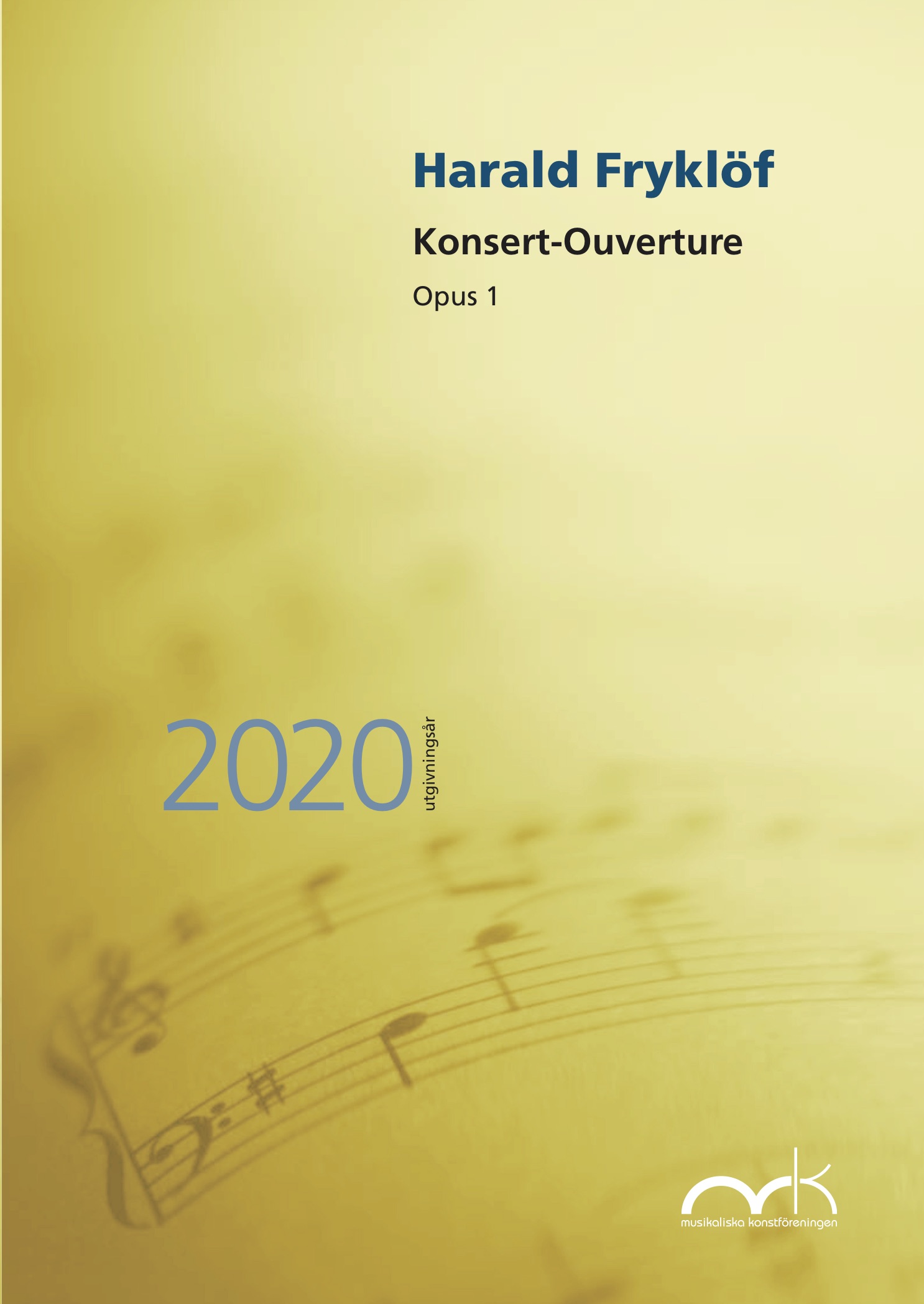
|
Lennart Hedwall (1932)
Lennart Hedwall (born 1932) is a Swedish composer with many strings to his bow: conductor, pianist, fortepiano-player, musicologist, and author. The art of writing songs has been important to him as a composer, researcher, and accompanist. He has documented the Swedish art of song-writing both through a series of radio broadcasts and the monograph På sångens vägar (On the paths of song) as well as by accompanying many Swedish singers in recordings and concerts, often with Swedish repertoire. Moreover, he has composed almost 300 songs.
As a composer, Hedwall has often turned to Swedish poetry. Musikaliska konstföreningen has compiled two booklets with his settings of poems by Swedish poets.
|
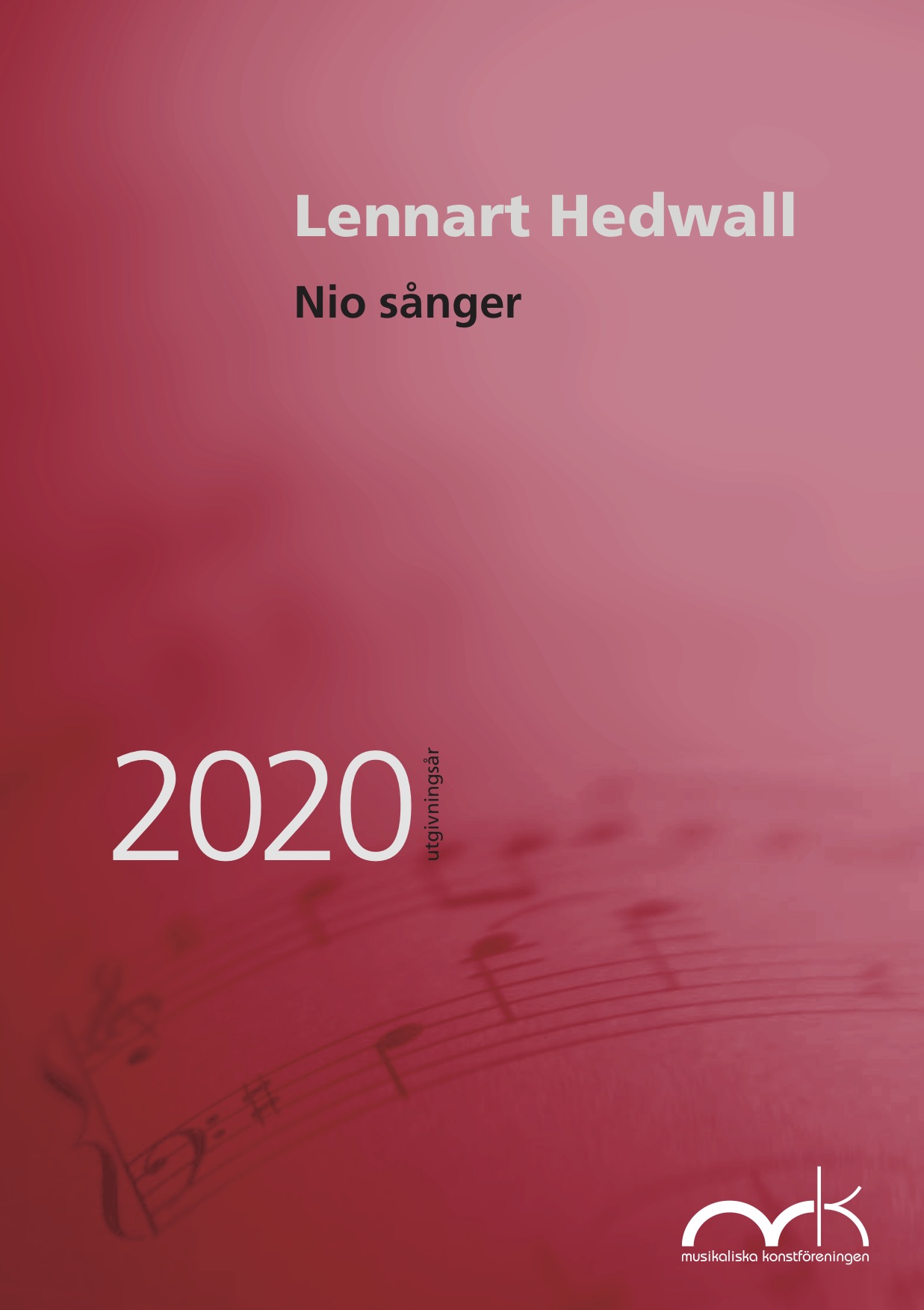
|
|
Nio sånger (Nine songs).
1. Det var en tid… (C.J.L. Almqvist)
2. Om så det skulle hända… (C.J.L. Almqvist)
3. En Måne, dock… (C.J.L. Almqvist)
4. Sovander gårdar (V. von Heidenstam)
5. Den tyngsta vägen (V. von Heidenstam)
6. En skogsvisa (Bo Bergman)
7. Barmark (Bo Bergman)
8. Nödsignal (Bo Bergman)
9. Varsel (Bo Bergman)
Sex sånger (Six songs).
1. Nocturne (Sigurd Agrell)
2. En resa (A.T. Gellerstedt)
3. Livets bok (C.G. Strandberg)
4. Bleka skimmer… (H. Larsson)
5. Varför till ro så brått? (V. von Heidenstam)
6. Über allen Gipfeln (V. von Heidenstam)
|
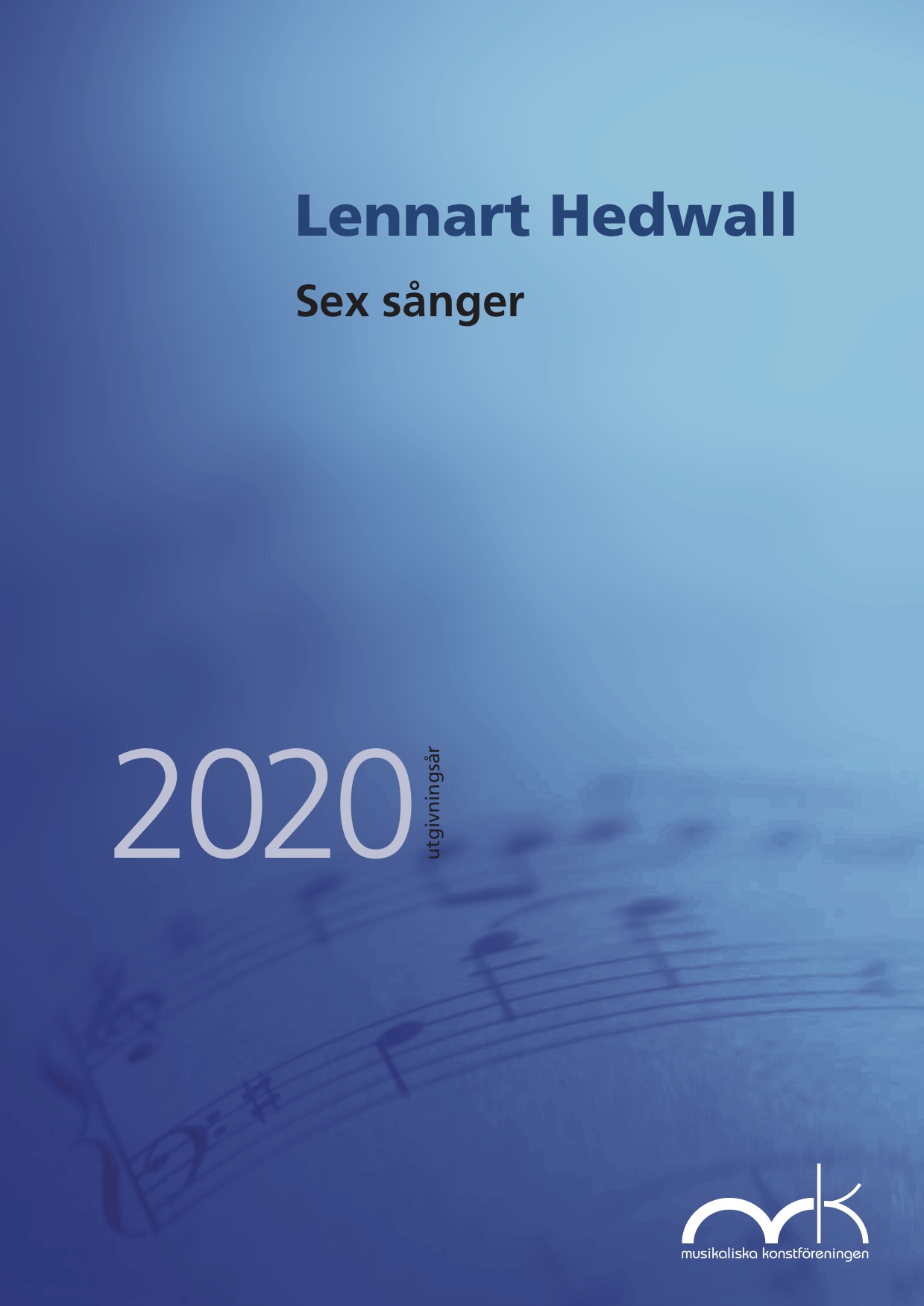
|
Kurt Atterberg (1887-1974)
Sonata for horn and piano, Op. 27 bis.
In 1925 Kurt Atterberg completed an experimental sonata for a single string instrument and piano with three different string parts – for violin, viola, and violoncello respectively – to the same piano part. Musikaliska konstföreningen published the sonata in 1930. Atterberg seems to have counted the experiment a success, for in 1954 he wrote a further part for the French horn which until now has remained unpublished.
The horn part is now included with the Sonata for a string instrument and piano, Op. 27. |
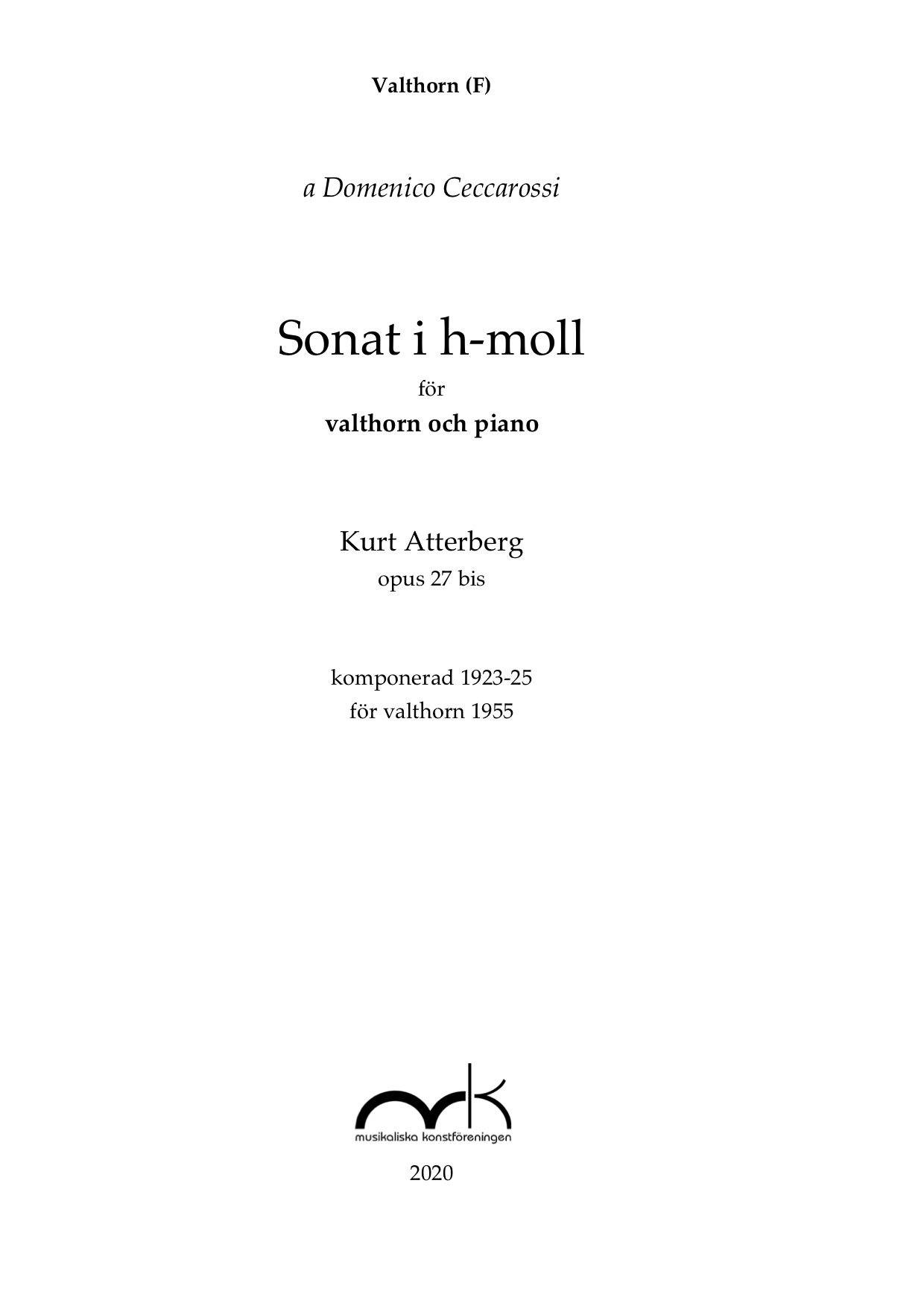
|
Wilhelm Stenhammar (1871-1927)
Sången. A symphonic canatat, Op. 44.
Sången (The Song) for soloists, choir, and orchestra to a poem by Ture Rangström was composed in 1921 to commemorate the 150th anniversary of the Royal Swedish Academny of Music. A vocal score by the composer was published in 1924 and after being out of print for some time is once again available in facsimile.
Vocal score with text (piano reduction of the orchestra and all vocal parts). |
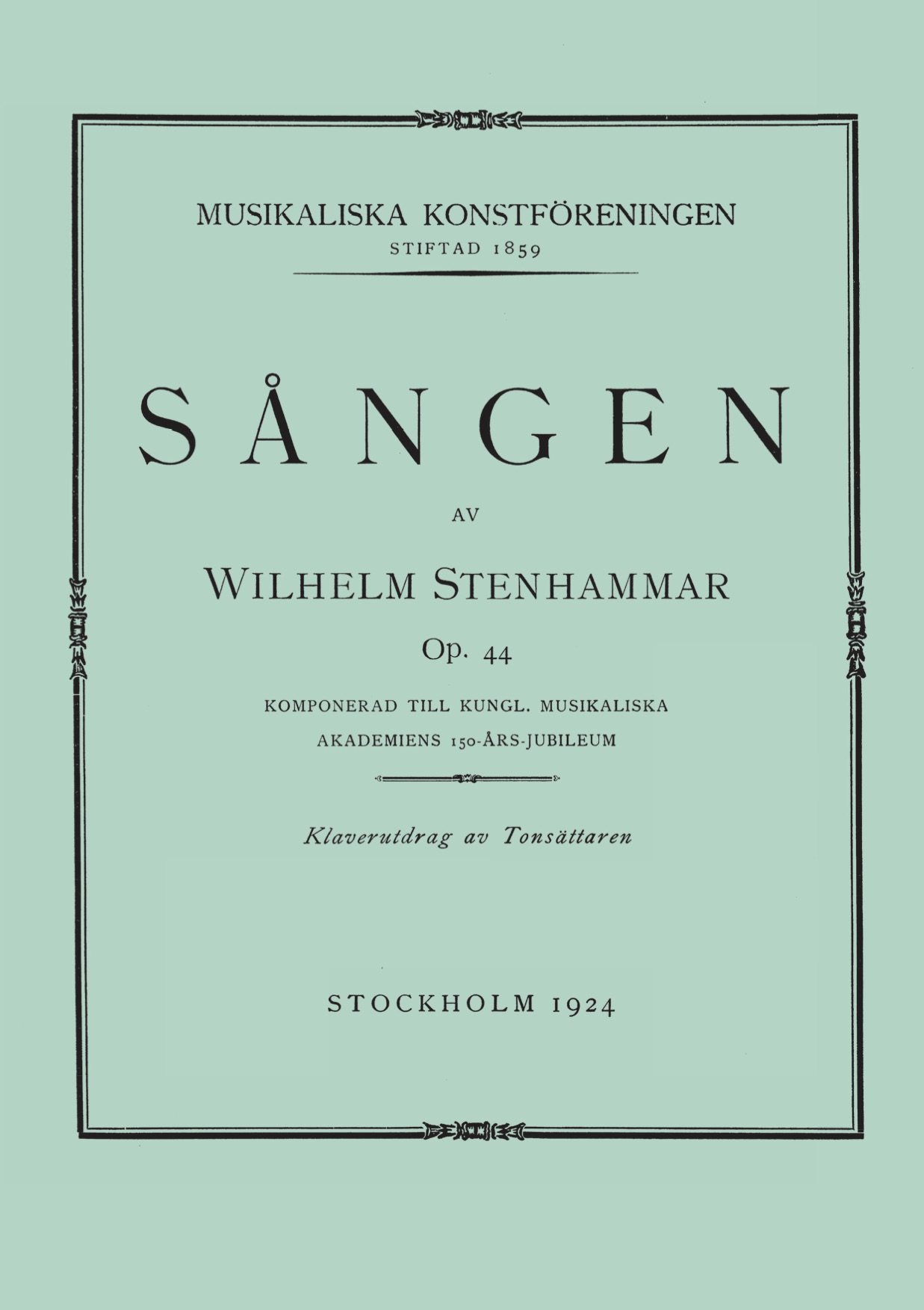
|
Michael Waldenby (1953-)
Ithaka, ballad for mezzosoprano and organ Op. 13.
Ithaka was composed in 1982 to text from a poem by Oscar Levertin with the same title. An important source of inspiration for both Levertin and Waldeby is Arnold Böcklin's famous painting Isle of the Dead – Die Toteninsel.
Organ score with text. |
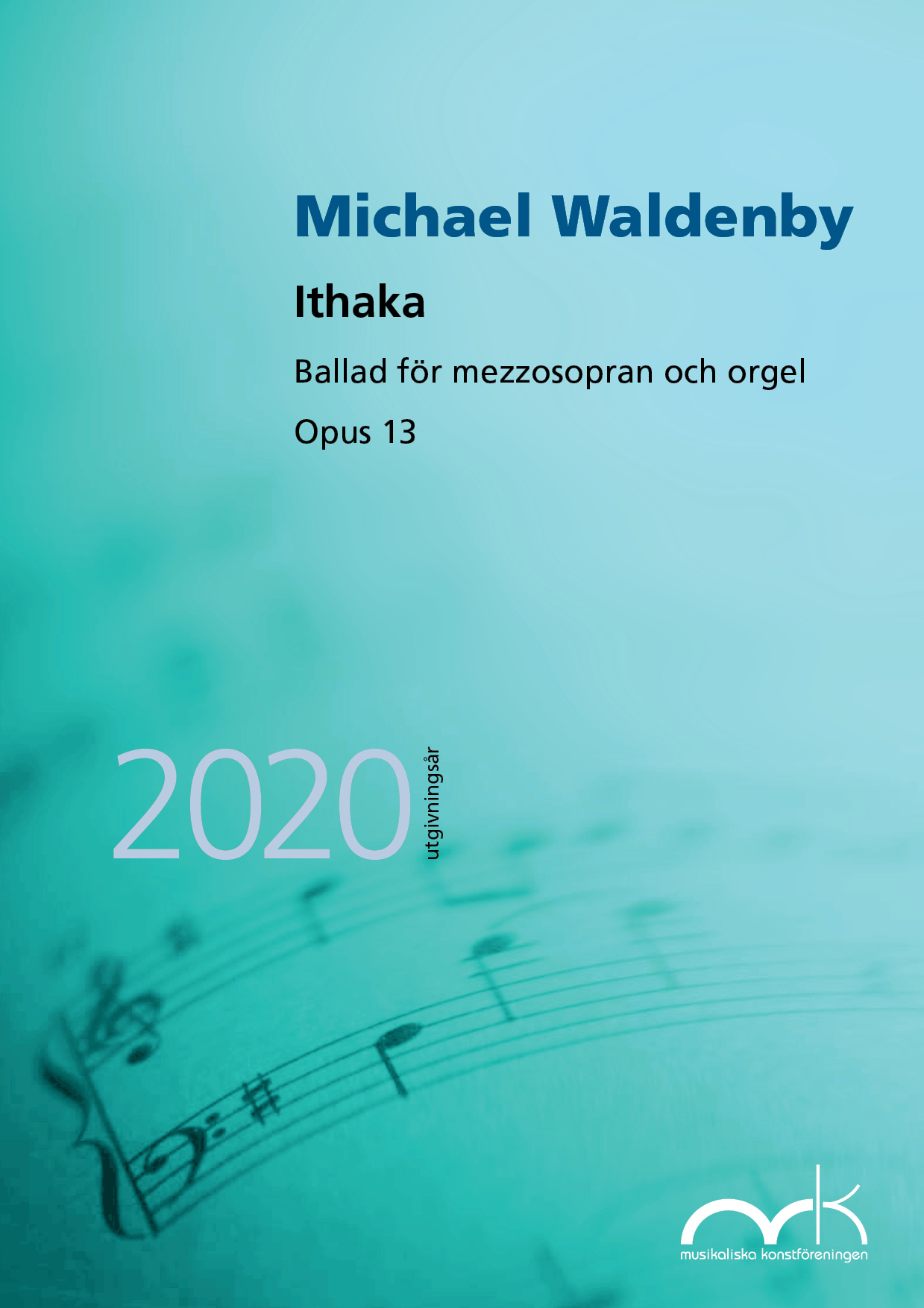
|
Henning Mankell (1868–1930)
Klaverstycken (Piano Pieces) Op. 60.
A source of inspiration that resonates deeply in the music of Henning Mankell is nature. The wide-open sea outside his hometown, Härnösand, the deep forests, mighty mountains, and powerful rivers of Lappland all captivated him. He always spent his summers in the part of Sweden where he grew up, and the intense impressions the north country made on him often served as material for his atmospheric music. This is noticeable even in the four pieces of opus 60, which are here presented together for the first time: “Barcarole”, “Evening mood”, “Storm brewing”, and “Light swell”.
This edition is based on Mankell’s own autographs at Musik- och teater-biblioteket in Stockholm
|

|
















